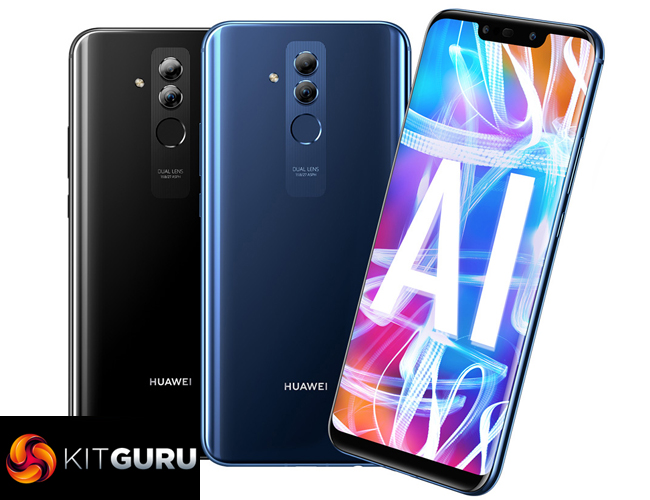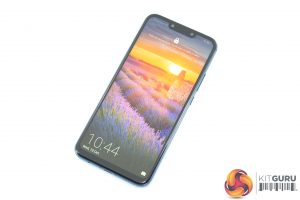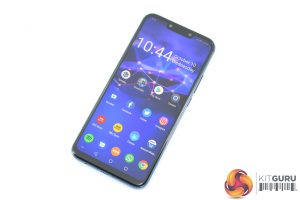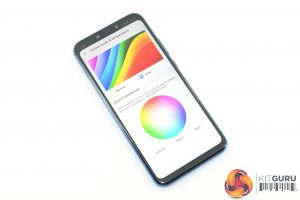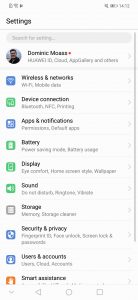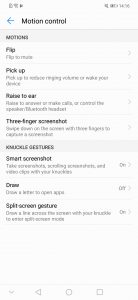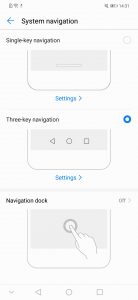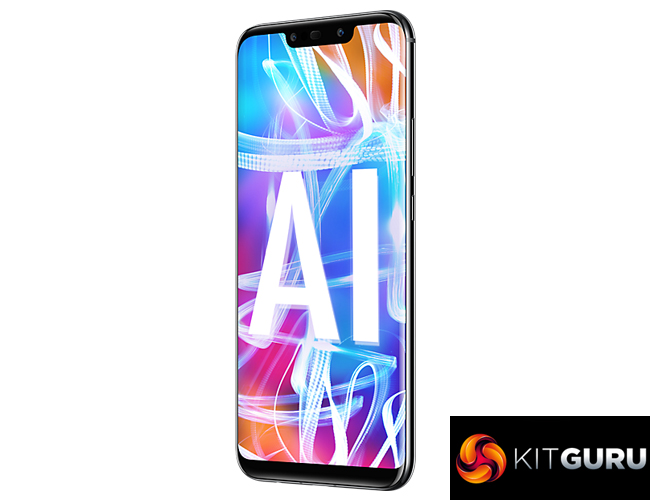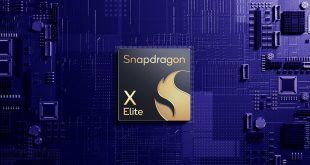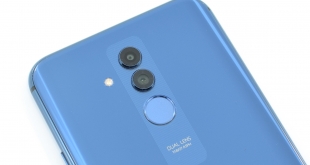
Following on from the success of Huawei's P20 series, the Chinese smartphone giant made the unusual decision to release the budget model from its new Mate 20 series first. The Mate 20 Lite retails for £379 – putting firmly in mid-range territory – and boasts features including a 6.3in display, premium design and AI-enhanced cameras. Can it stand out in a crowded market?
With other specs including a new Kirin 710 processor, 4GB RAM and 64GB of internal storage, the Huawei Mate 20 Lite seems have the makings of a decent mid-range smartphone. It will face stiff competition from the likes of the ASUS ZenFone 5 and even the Honor 10 – but can it do enough to prove it's worth buying?
Specification
- Dimensions: 158.3 x 75.3 x 7.6 mm
- Weight: 172g
- Display: 6.3in 2340x1080p IPS
- CPU: Kirin 710 Octa-core
- GPU: Mali-G51 MP4
- Storage: 64B (internal), up to 256GB via microSD
- Memory: 4GB RAM
- Rear cameras: 20MP f/1.8 main, 2MP secondary (depth sensing)
- Front cameras: 24MP f/2.0 main, 2MP secondary (depth sensing)
- Battery: 3750mAh
- Connectivity: USB-C (2.0), 3.5mm jack
- Software: EMUI 8.2
Design
Note: if the above images are not displaying properly, you may need to disable your ad block software as they are known to interfere with our display code.
There's no denying the fact that the Mate 20 Lite looks like almost every other Android phone that has been released in 2018 – it has shrunk the bezels as much as possible, introduced a fairly wide notch and a small chin at the bottom of the device. It's certainly not ground-breaking stuff.
That being said, it feels like a premium phone which belies the fact that it only costs £379. This is thanks to the swish glass back (which is slippery, mind) and aluminium frame which measures just 7.6mm thick. I have the blue model, but it is also available in black.
For a phone with a 6.3in display, it's also relatively compact – again, thanks to the slim bezels. While Huawei's Mate 10 series phones didn't have any notches, compared to the P20 the Mate 20 Lite does have a slightly wider notch as it houses two front-facing cameras.
In terms of button placement, we have the power button and volume rocker on the right-hand edge of the phone, with a SIM tray on the left-hand edge which supports dual nano-SIMs or 1x SIM and 1x microSD card. It is good to see both a USB-C port and a 3.5mm headphone jack on the bottom edge, along with a single downward-firing speaker.
The back of the phone houses the two cameras and fingerprint scanner in a straight line down the middle of the phone – with the idea of symmetry being something the Mate series is known for.
Lastly, it is worth saying there is no IP certification for the Mate 20 Lite. This isn't usually a feature we see on phones around this price so I can't complain too much, but it is still something I like to see wherever possible.
Display
The 6.3in display on the Mate 20 Lite adopts the 19.5/9 aspect ratio – so it is another relatively tall and slim display. This means it has a ‘Full HD+' resolution of 2340×1080.
Across 6.3in this gives us a pixel density of 409 PPI. Essentially all the mid-range phones I have reviewed this year have a similar level of sharpness to them, and while you can tell the difference if the Mate 20 Lite is sat next to a Galaxy S9 for example, it is fine to use day to day.
It's another IPS panel, too, and it is generally pretty decent considering the price. Viewing angles are excellent, and you get relatively punchy colours. Again, sit it next to a phone with a decent OLED screen – like the OnePlus 6 – and it does start to look a little flat and lacking in contrast, but compared to other phones at a similar price, you are unlikely to get better than this.
Brightness levels are pretty good too, as it is easy enough to use outdoors in bright sunlight. It doesn't get quite as dim as I would like when using the phone at night, but it's an all-round decent display. You can also adjust the colour temperature and saturation levels within the settings to tweak things to your liking.
Performance
This is usually where we show our Geekbench 4 and Antutu benchmarks, with comparisons to a range of other phones. Considering the Kirin 710 is a new chip from Huawei itself, I was pretty keen to see how it performs relative to the likes of the Snapdragon 660 or Kirin 970.
Unfortunately, it seems there is some kind of block on downloading benchmarking apps from the Play Store – whenever I tried to download Geekbench 4 I was met with an ‘error 501' message. I have spoken to a few friends in the industry and this was also affecting their Mate 20 Lite samples, and at a guess Huawei has put this block on early models to prevent performance leaking before the phone released, and has not yet update the software to remove this block.
In any case, I can't show relative performance for our usual benchmarks, but I can talk about day-to-day performance – and to be honest, it is pretty much what I expected. That means for the majority of the time using the phone, you won't run into any issues. There are the tell-tale signs that this isn't a flagship CPU, however, as apps can occasionally stutter and lag, while I also noticed some apps would take that split second longer to load.
That means the overall experience is pretty much the same as when using the Honor 10 and the ASUS ZenFone 5 – the Mate 20 Lite is fast enough to get the job done and most of the time you won't notice it causing any issues. The longer I used it, however, the more I noticed it wasn't quite up to the speeds I have been used to when using the likes of the OnePlus 6 or even the P20 Pro.
Much the same can be said of the rear fingerprint scanner – I very much appreciate it being positioned on the back within easy reach of my index finger, but it is not the fastest I have ever used and you do notice yourself staring at a black screen waiting for it to spring to life. It's obviously all relative to price, so we can't reasonably expect the scanner to be as fast as on a flagship device that costs twice as much, but you will notice the difference.
Also speaking of performance, I have to say the single downward firing speaker is quite poor. It gets reasonably loud, but it sounds very tinny and quite ‘crunchy', meaning there is some quite noticeable distortion as well. Again, it's not the biggest deal – I usually use earphones whenever listening to music on my phone or watching Netflix, but for a YouTube video or two the speaker is disappointing.
Software
In terms of its software, the Mate 20 Lite runs EMUI 8.2 – Huawei's Android Skin. This sits on top of Android Oreo 8.1 – meaning there is no Pie support yet for the Mate 20 Lite.
I have been using what is essentially the same software on my P20 Pro over the last few months, and EMUI is now very familiar to me.
While I generally find it OK to use, I do think EMUI 8.2 needs a face lift – there are a lot of settings options, and the quick settings panel looks quite clunky and out of date.
I don't think it helps matters that the EMUI 9 beta was launched alongside the Mate 20 Lite at IFA this year – with a more streamlined appearance and a brighter aesthetic which I personally prefer. Unfortunately, we are still waiting for this to publicly release to the Mate 20 Lite, even though the Mate 20 Pro has now launched with EMUI 9 as well.
There are some good features baked-in, though, including motion control options which turn the screen on as you lift it up, while you can also open different apps by drawing letters on the screen while it is off.
One thing I would like to see, however, is gesture navigation. At the moment, there's no way to navigate the phone without some sort of button appearing on screen – be it the traditional home buttons, a single-key button or Huawei's floating navigation dock. Considering the Mate 20 Lite has a relatively large 6.3in display, I'd really like to make the most of it and use gestures – negating the need for any extra options cluttering up the display.
This is something that is now included within EMUI 9 on the Mate 20 Pro, but I think Huawei missed a trick by not incorporating the feature into EMUI 8.2.
Camera
The Mate 20 Lite has two cameras on the back – one 20MP primary shooter with an f/1.8 aperture, and one secondary 2MP camera that is only for depth sensing. That means there is effectively just one lens when shooting normal photos – so there are no zoom or ultra-wide options.
The big thing, however, is the AI-enhancement. This can be enabled through a simple button in the camera app which is labelled ‘AI' – as you can see above. This then uses Huawei's AI technology to automatically detect various scenes and objects – including animals, food, flowers etc – and enhances the image accordingly. As with the Honor 10, even if a particular object isn't recognised, the AI still makes some adjustments to the photo to (hopefully) make it look better.
This may or may not be your cup of tea, but it is worth pointing out that if you shoot with AI mode turned on, you can turn it off for each photo when viewing images with the gallery app. Just tap the same little AI icon above each photo and the enhancements will be removed, leaving you with your original image.
Note: if the above images are not displaying properly, you may need to disable AdBlock as it is known to interfere with our display code.
Looking at the images above, if we start by analysing the general photo quality – with AI turned off – I would say the Mate 20 Lite is decent but not spectacular considering its price. Photos look quite sharp and have plenty of detail which is more than can be said for some mid-range cameras, but dynamic range is quite poor out of the box. Low-light photography is also not very impressive – detail quickly goes out the window in darker environments, while there is quite a lot of visible noise present.
Still, photos taken in good light are certainly decent – and I have to say the AI processing can improve things, some of the time at least! Take the photos of my dog – with AI off, they look quite dark and under-exposed. AI bumps the shadows up, though, and you get a much clearer and brighter image.
Where the AI doesn't work is with greenery and flowers. Here, the processing just over-does the saturation and images look quite fake. I'm not too keen on the extra saturation applied to low-light shots as well, as it only makes the ISO noise look worse.
For £379 it would be unreasonable to expect too much from what is essentially a single lens setup, and most of the time the Mate 20 Lite will give you very usable photos. Every now and again, though, you will take a photo or two that just reminds you this is indeed a lower mid-range smartphone.
Battery
For its battery, the Mate 20 Lite uses a 3750mAh cell. This isn't quite as big as the 4000mAh units we have seen from other Huawei flagships, but it is certainly very impressive for this market segment.
In practice, I found it definitely helped elevate the Mate 20 Lite above the likes of the Honor 10 or the ASUS ZenFone 5. I would easily be able to use the phone all day – typically with between 4.5 and 5 hours screen-on time – and get into bed with at least 30% battery life remaining. It's not quite as good as the Mate 10 Pro, but again – for this price, it is very impressive.
The Mate 20 Lite also sports Huawei's 18W Quick Charge via the included charger, and I found after a 30 minute charge I gained 29% battery capacity. This isn't great, but considering a fully charged battery should last even the most demanding users at least a full day, it is not a huge problem.The Huawei Mate 20 Lite is another solid mid-range offering to launch in the second half of 2018.
We've seen other models like the Honor 10 and ASUS ZenFone 5 launch over the past few months, and I have to say they all perform quite similarly, while pricing is a toss-up between all three.
The 1080p display on the Mate 20 Lite is solid – it is an IPS panel so you get decent colours and excellent viewing angles, although that can also be said of the competition. I do think the Mate 20 Lite has the edge when it comes to design, though, as it looks most like a modern day flagship with its slim bezels and curved sides, while the construction is also undeniably premium.
Being a Huawei phone, we find a Kirin 710 chip – not a Snapdragon equivalent – and this is a new mid-range processor developed by Huawei itself. For as yet unconfirmed reasons, we weren't able to benchmark the CPU so I can't give you figures relative to chips like the Snapdragon 660 or 845. I can tell you that day-to-day performance is pretty much what we'd expect from a phone at this price, meaning it will get the job done most of the time but you are aware that it isn't quite as fast as flagship offerings, while I also encountered the occasional stutter.
The camera setup uses two shooters on the back of the phone – one primary and one depth-sensing camera – and these are generally pretty similar to the Honor 10. The phone takes decent images in good lighting, and the AI can also help improve dynamic range, but low-light photos don't look great and the AI can make images look quite artificial as well. So while it's not a perfect setup, and I would probably just about give the ZenFone 5 the edge here, it is still decent considering the price.
Battery life does really help the Mate 20 Lite, though, as most competitors are all pretty average in this regard. Huawei fitted a 3750mAh cell to the phone and it will easily last a full day of use, while less demanding users will expect 1.5 days of use from a single charge.
All-in-all, the Mate 20 Lite is a decent mid-range phone retailing for £379. Its design has been brought down from 2018 flagships which makes it look like a top-end phone, and generally there isn't much wrong with it at this price. It doesn't seem to offer anything new or radical at this price point, though, and I would expect most people will be just as happy with the Honor 10 or ZenFone 5 – the latter which I think does have the slightly superior camera setup.
But for £379, the Mate 20 Lite is certainly worth a buy, especially if you want that flagship look at a mid-range price.
You can buy the phone from Carphone Warehouse HERE.
Pros
- Lovely design and build.
- Decent IPS display.
- Excellent battery life.
- Camera produces decent images in well-lit conditions.
Cons
- ASUS ZenFone 5 has a slightly better camera configuration.
- Kirin 710 chip is definitely mid-range.
- Doesn't offer much new to this market segment.
KitGuru says: The Mate 20 Lite is a decent mid-range phone from Huawei. It isn't going to blow your socks off, but it generally does everything fairly well.
Be sure to check out our sponsors store EKWB here
 KitGuru KitGuru.net – Tech News | Hardware News | Hardware Reviews | IOS | Mobile | Gaming | Graphics Cards
KitGuru KitGuru.net – Tech News | Hardware News | Hardware Reviews | IOS | Mobile | Gaming | Graphics Cards


